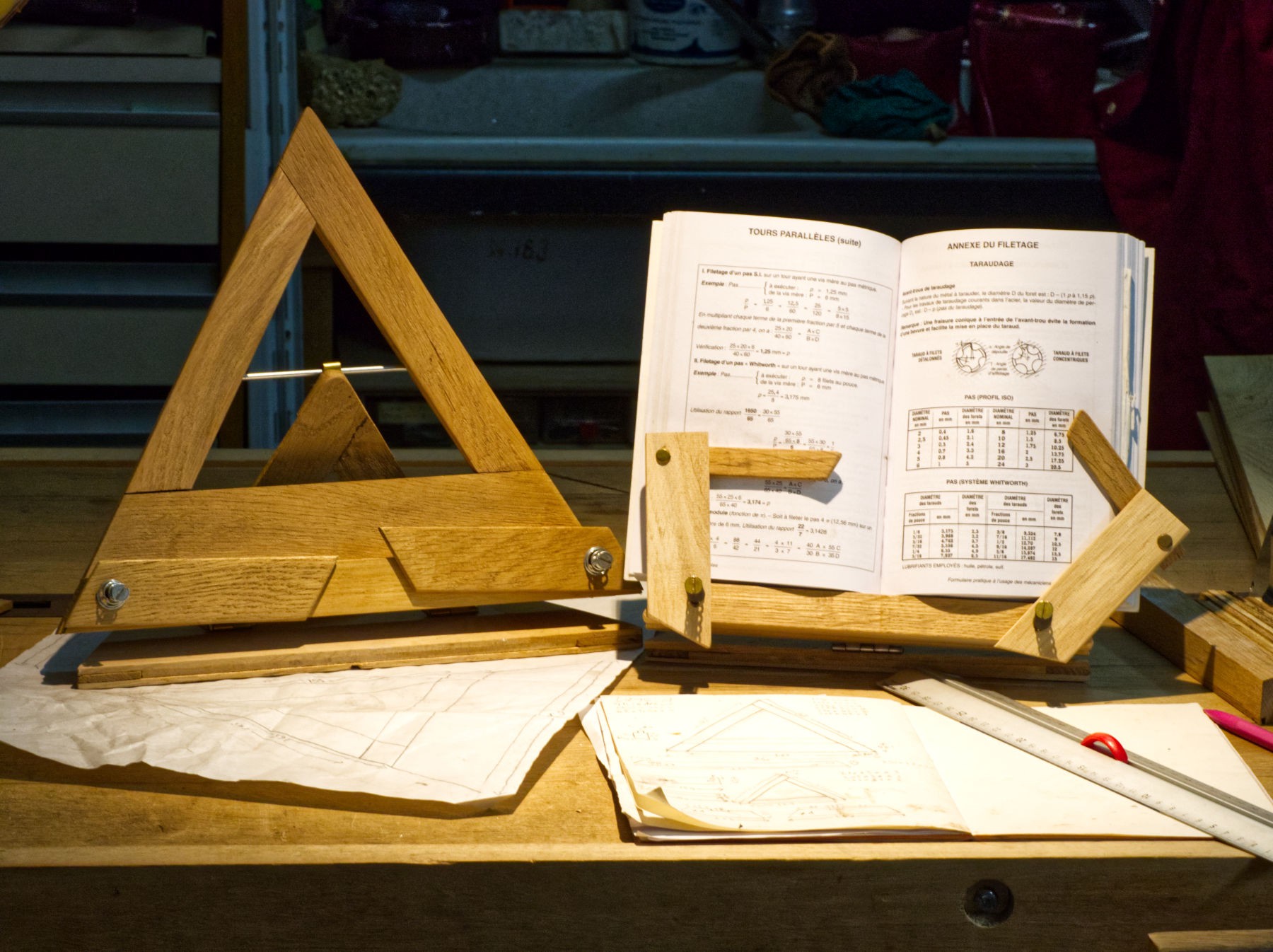
On the left, one of the first batch produced, on the right, the new design, with articulated thumbs, more convenient and efficient than the simple one with small tough books that don't want to stay open like that very good one, a must for any workshop :
the formulaire pratique à l'usage des mécaniciens et outilleurs (practical form for mechanics and toolmakers), a very useful thing for people that can't read a math formula without having an immediate neurone freeze, like me.
It also have a more elaborate stand.
And a smaller footprint when closed.
The very first batch was 300 mm wide (long ? it's equilateral anyway), the good size is 250 mm because of the size of the boards is 450 mm long and I can do more things with less falls but 300 mm is better for bigger books.
For the same reason the bigger low edge has been reduced from the original width of the board, 65 mm, to a very nice 42 mm (I really didn't do it on purpose ! but I'm happy with it).
Different smaller sizes have been tested, 200 mm is a bit too small without articulated thumbs, 225 mm is good for small books, but 250 is also enough for large semi soft cover books.
After being very very pleased with the use of the first lutrin, a new physical trouble appeared : the thing must stay on a table, so I can read seated on a chair, on on the top of a higher furniture (the bar), so I can read standing up.
And after standing all day in the shop at home or little less at work, I wanted the comfort of my deeeeeep armchair, the best place for endless book readings.
So I had to build a tripod, to hold the lutrin, a nice one.
There's a big issue for me with that build : I made it to hold a book while reading, all the first batch of them have been gifted to friends or relatives, and they love it, but never use it to read... They all use it to display a book, with a nice image, or a painted plate ! It's very difficult, if you create a thing for a purpose, when people use it another way. In a less interesting way in my opinion...
 [zit] Olivier Gade
[zit] Olivier Gade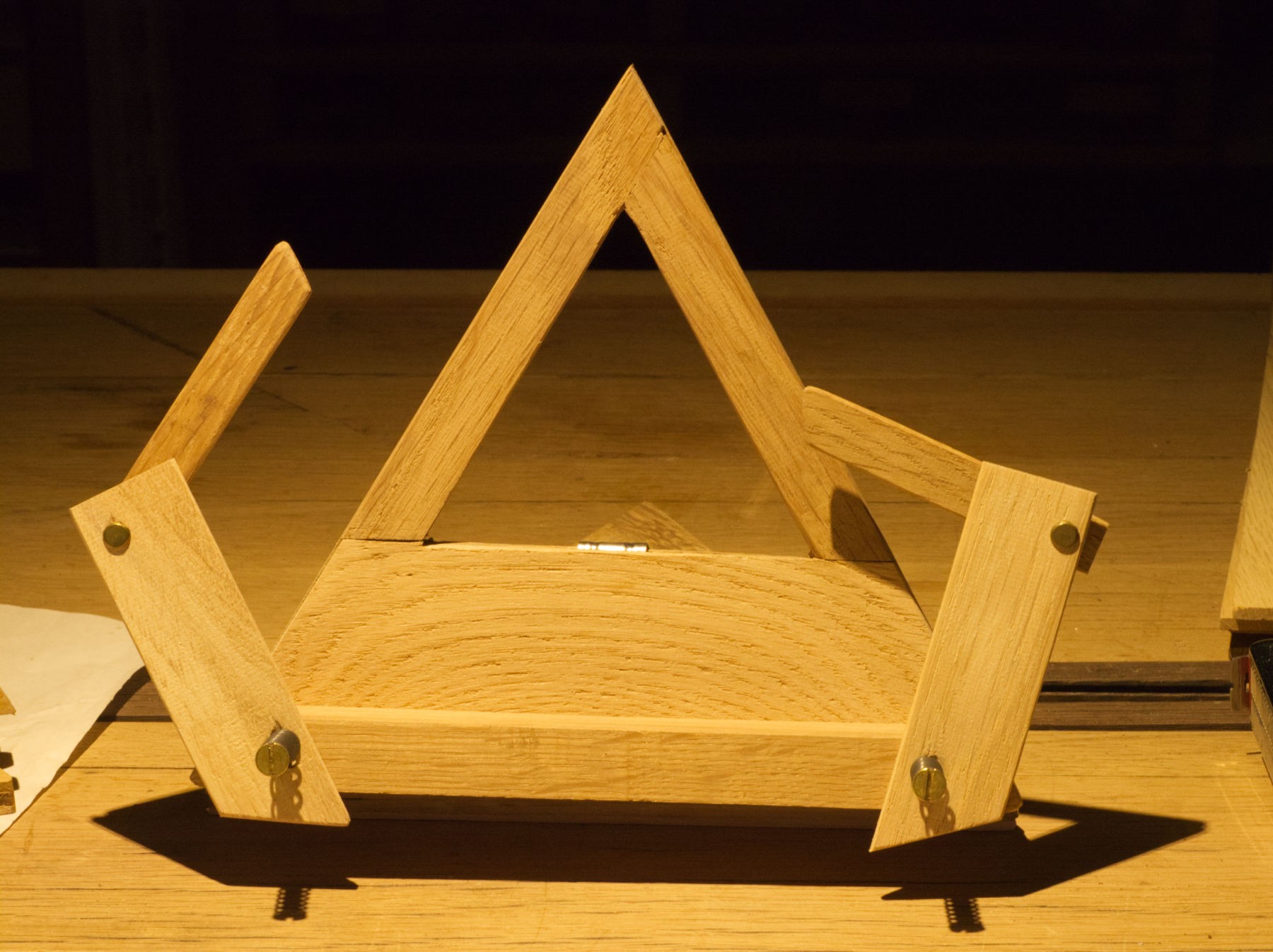
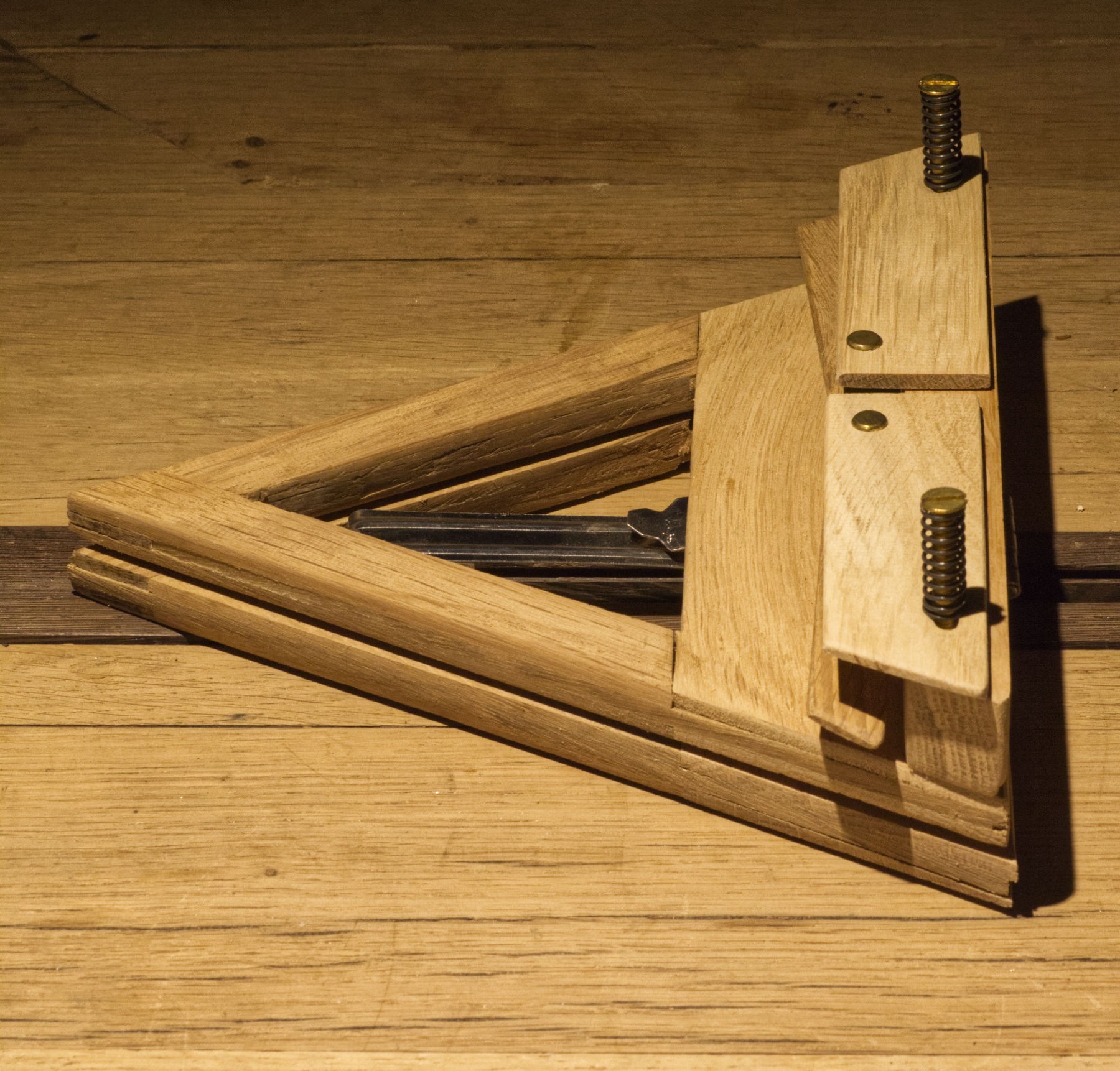

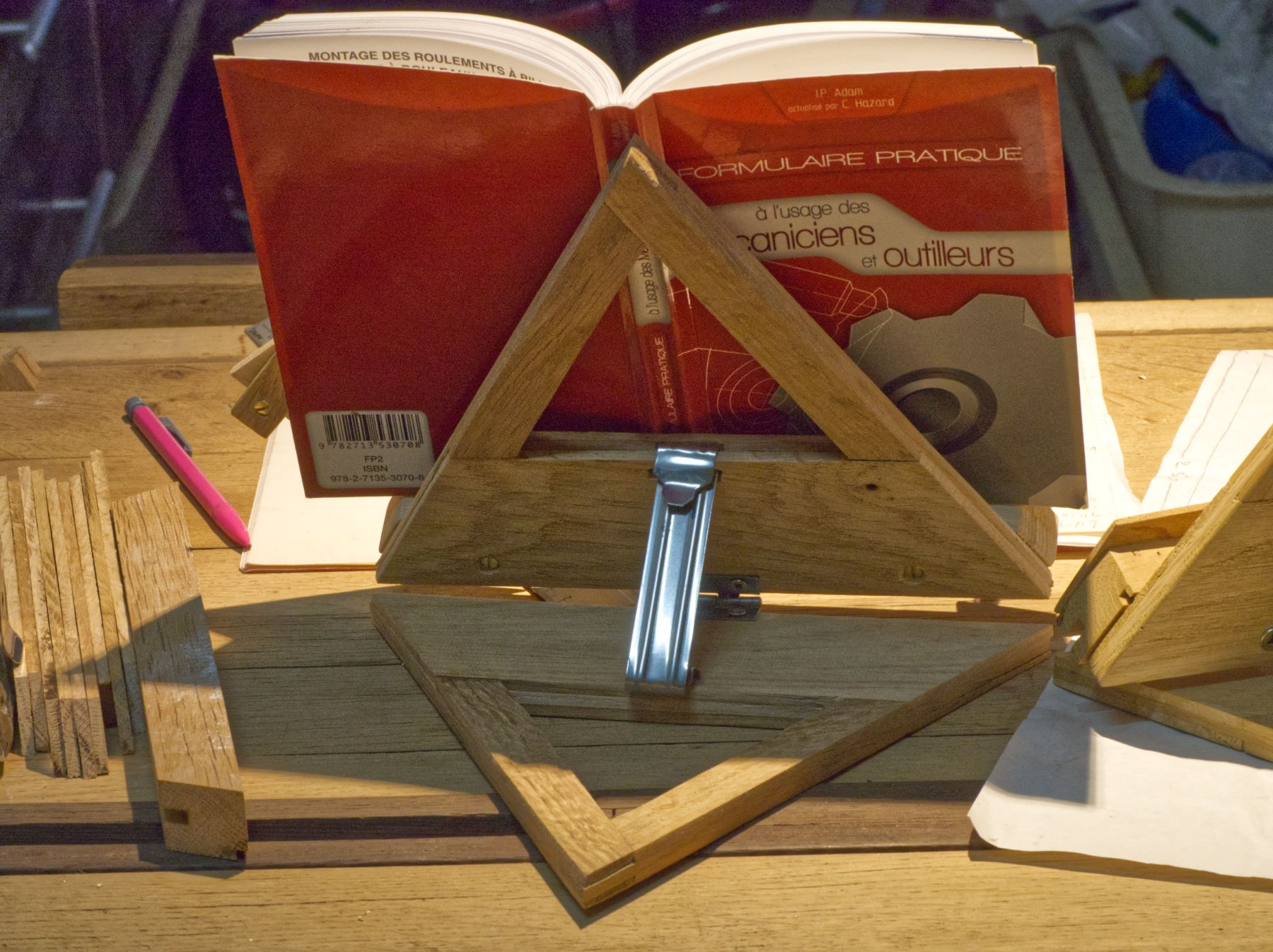
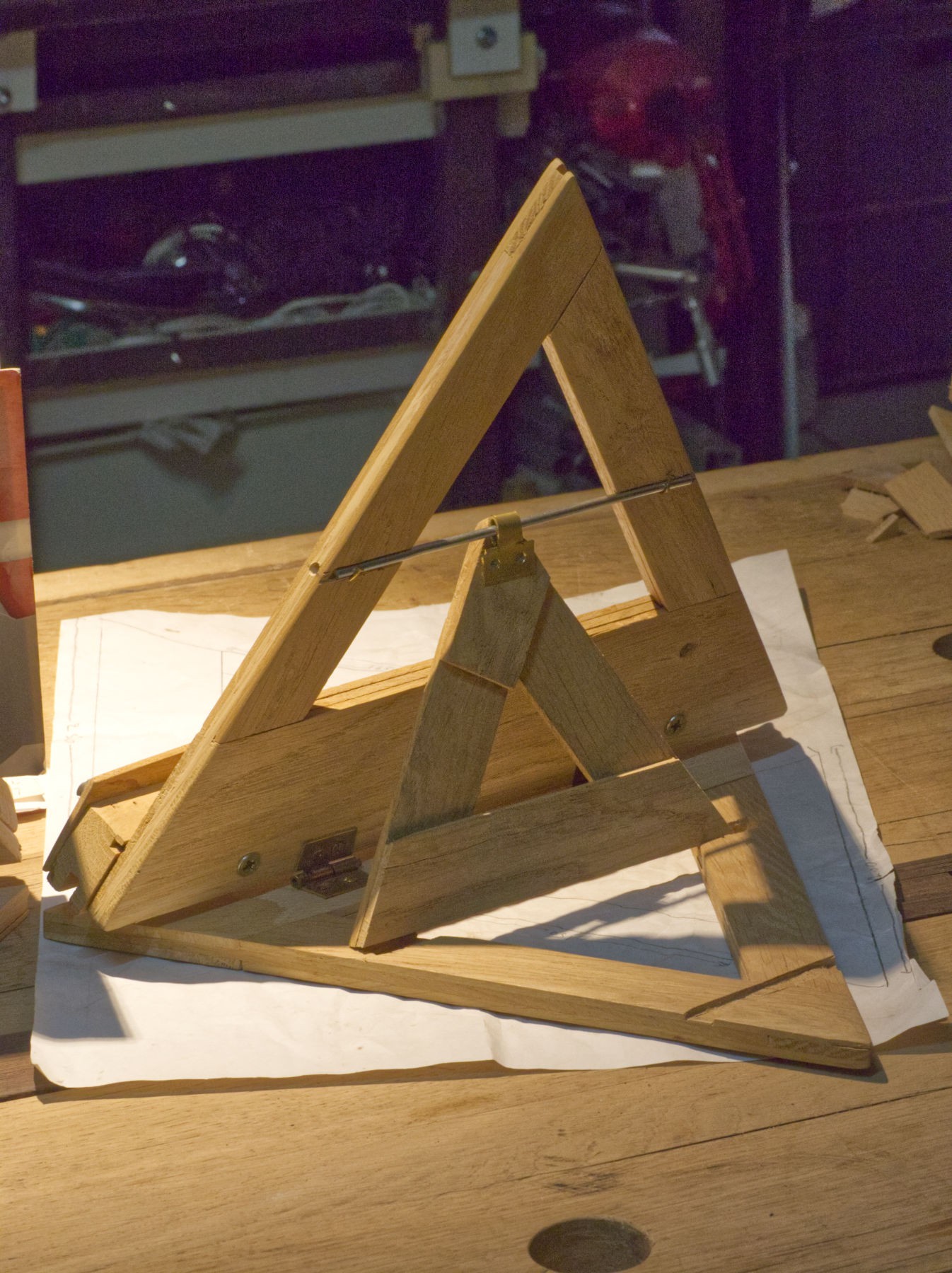
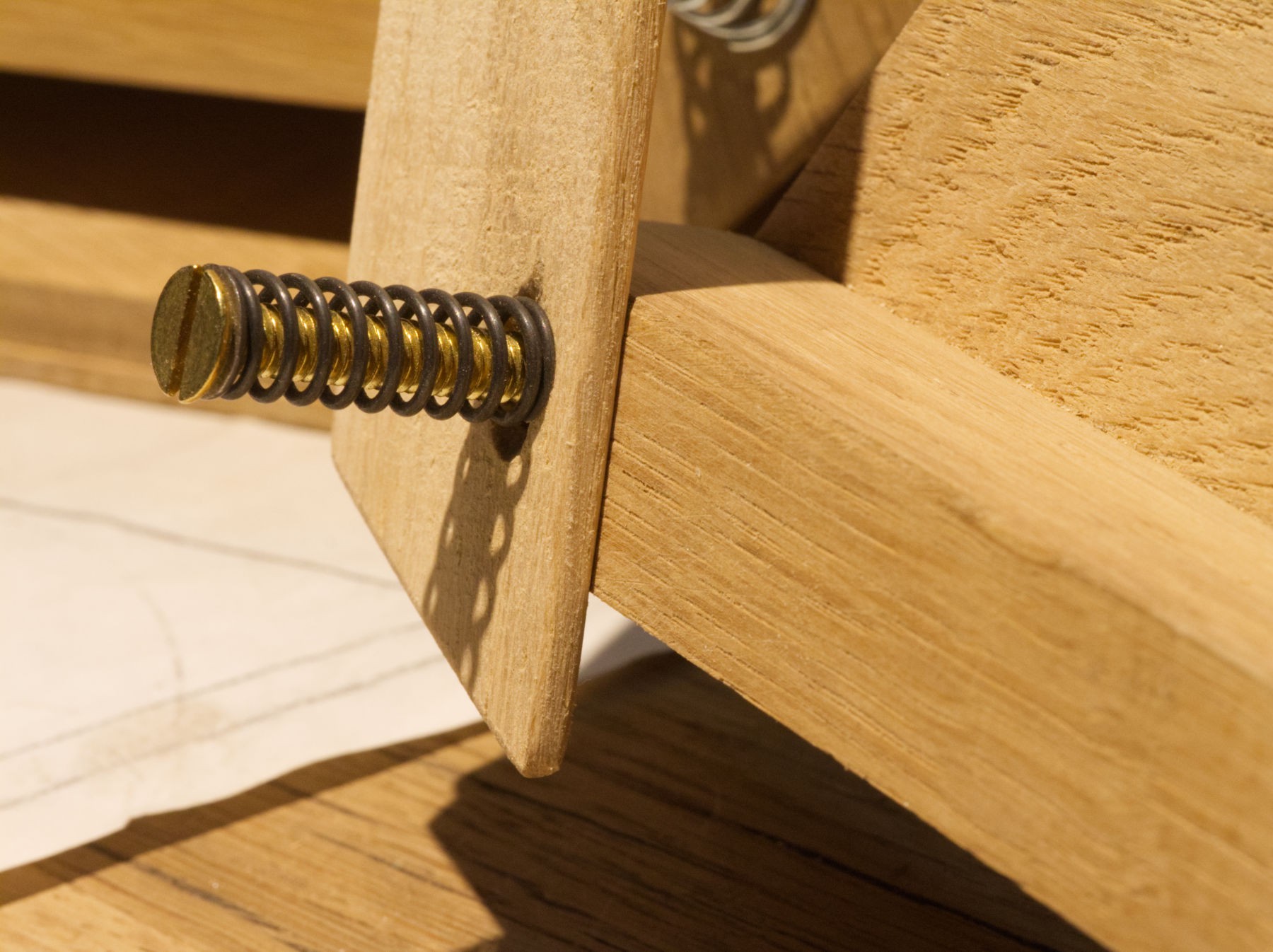
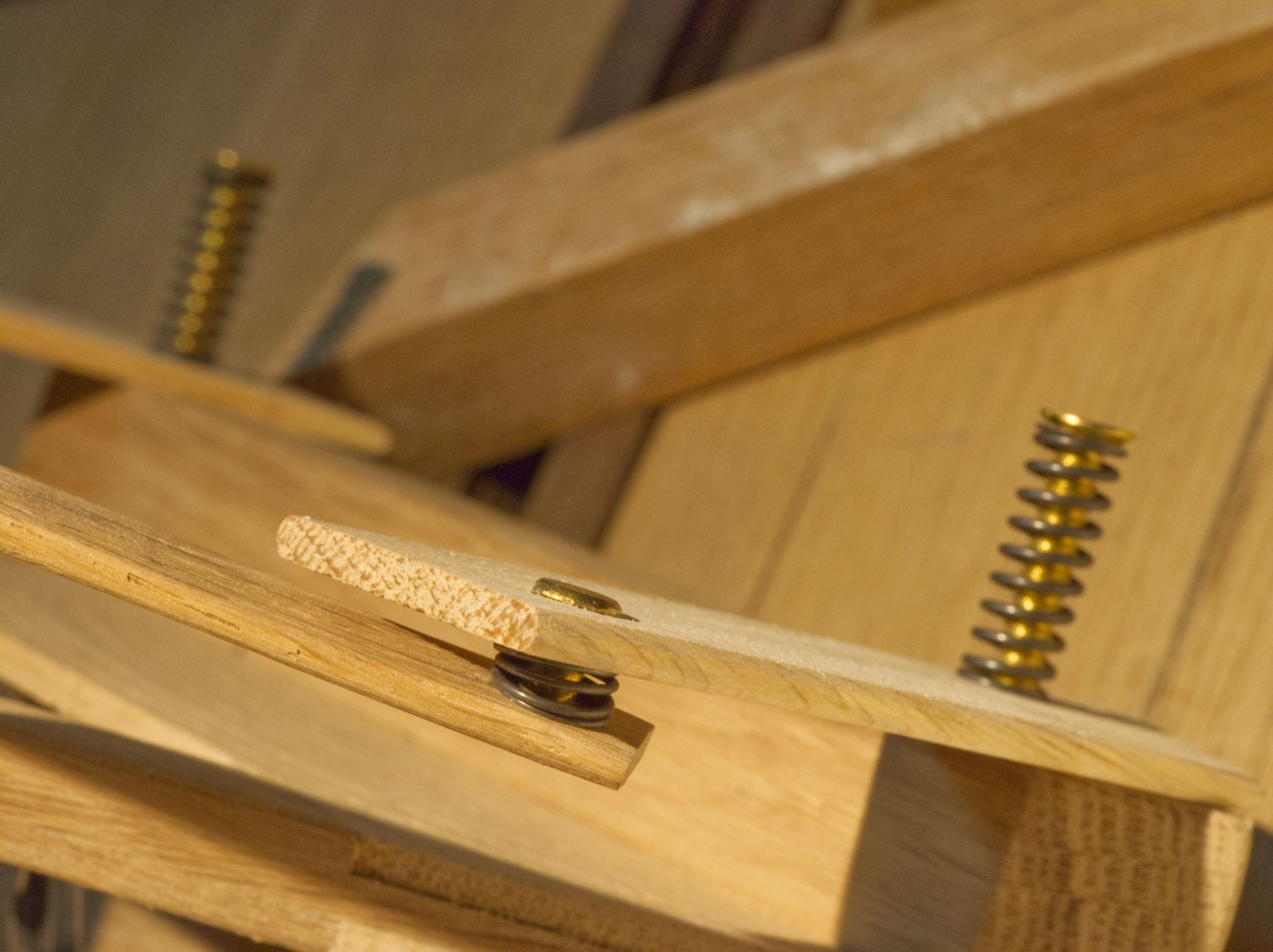
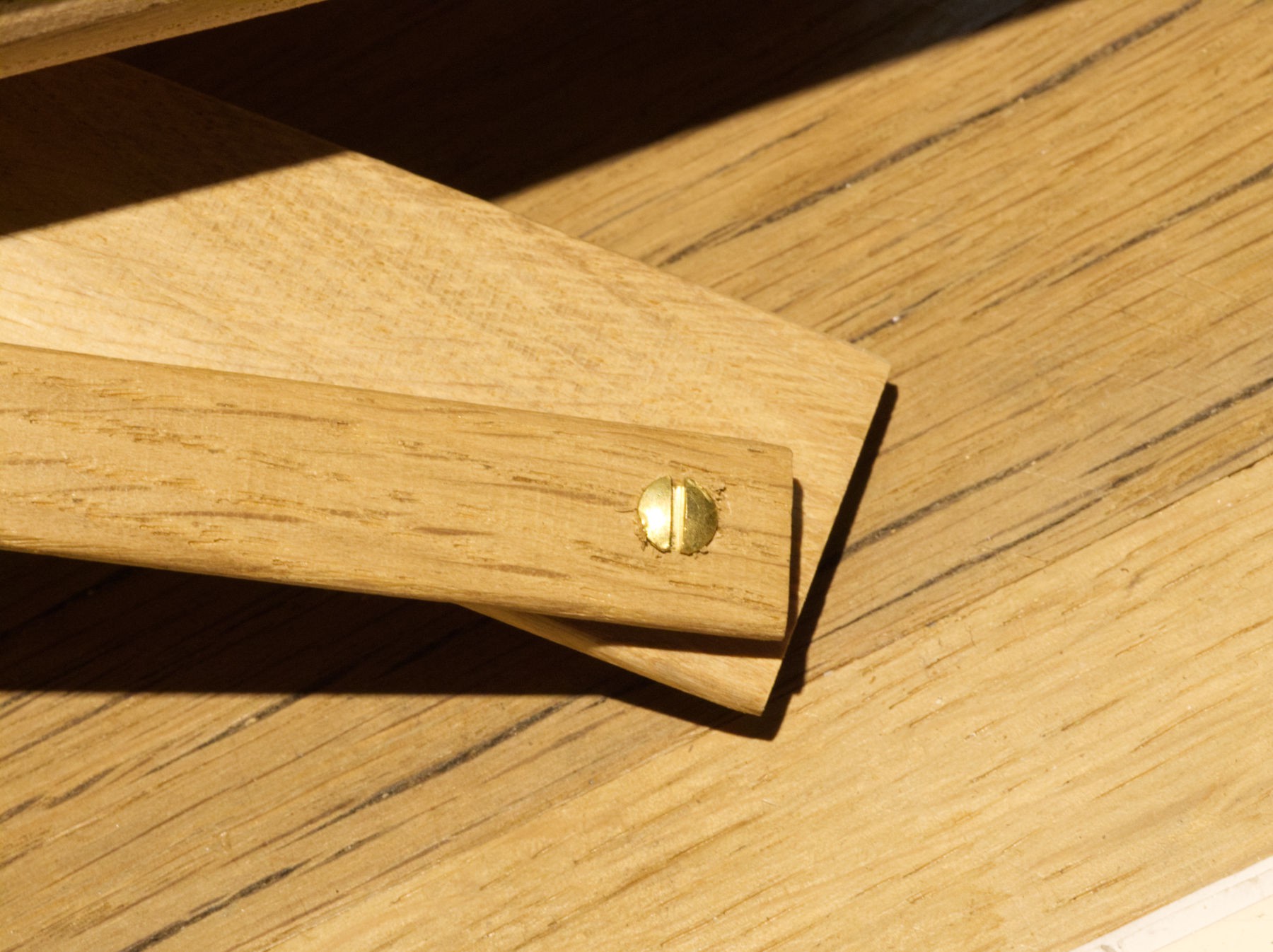
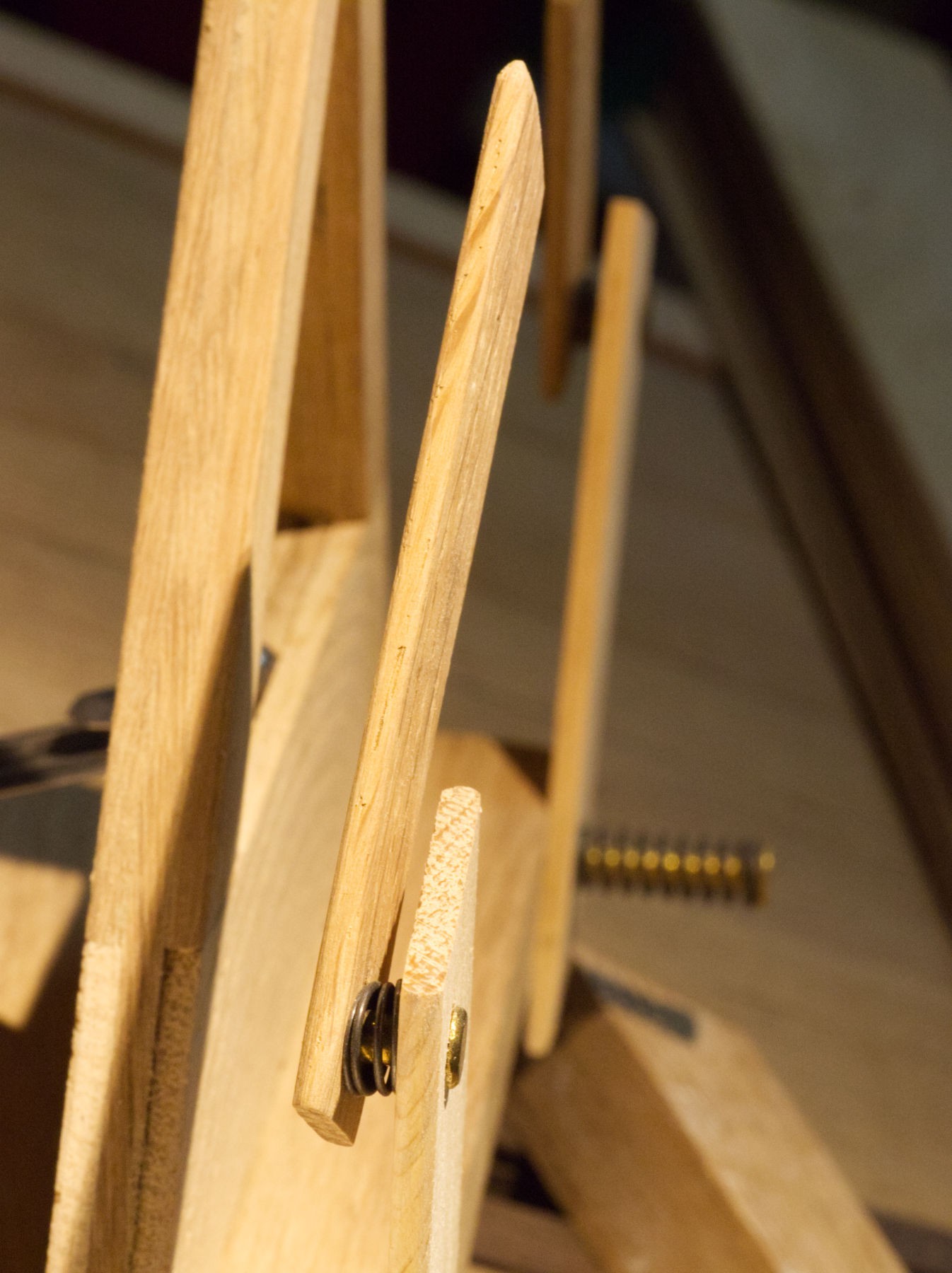
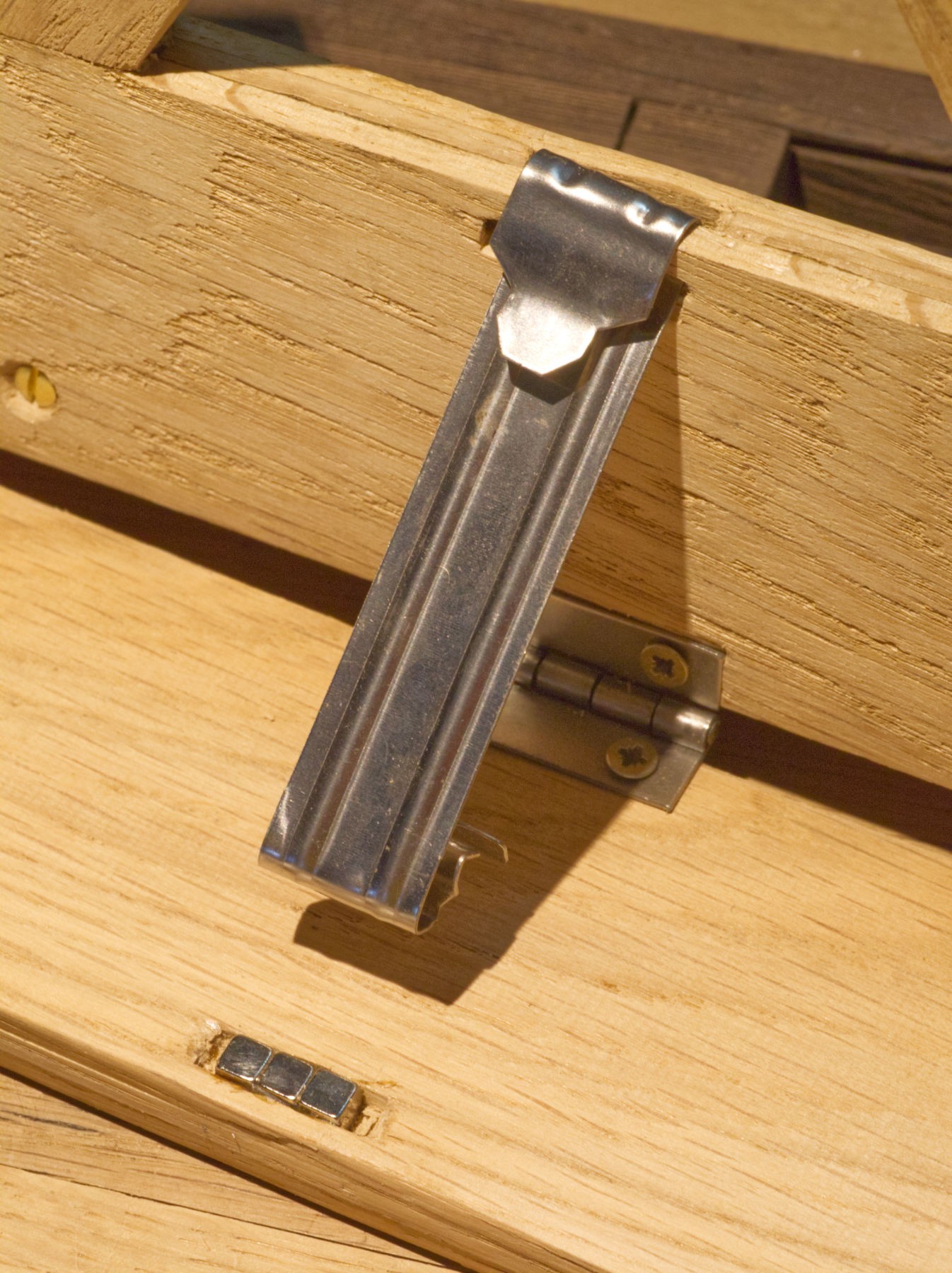
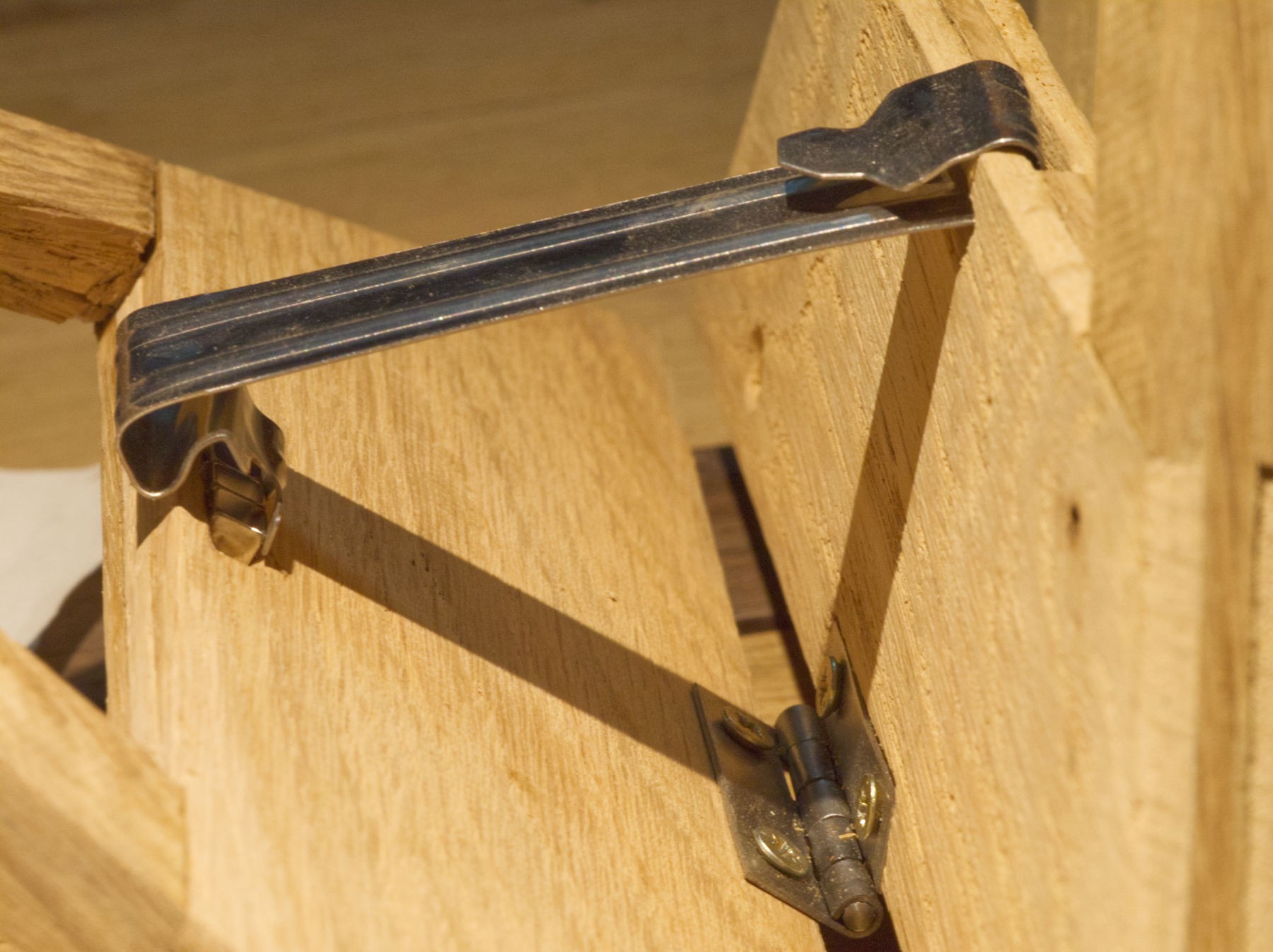
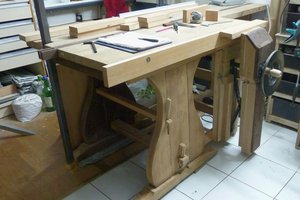
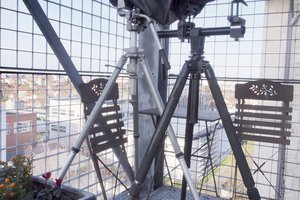

 Magnus Selin
Magnus Selin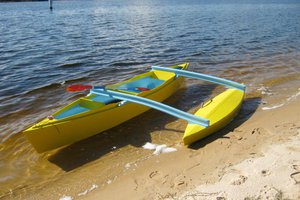
 agp.cooper
agp.cooper